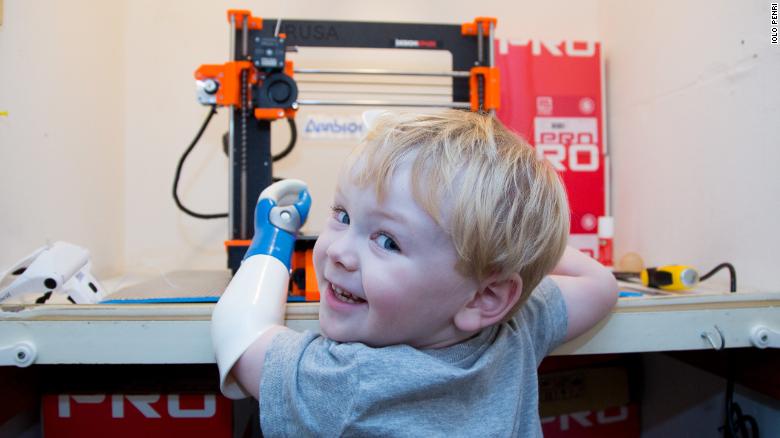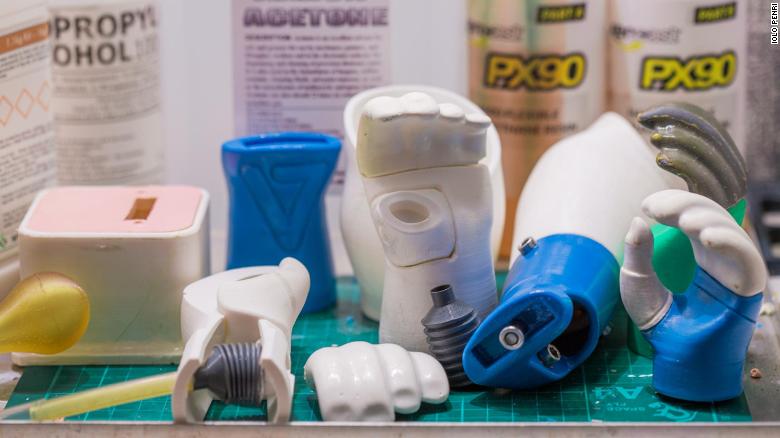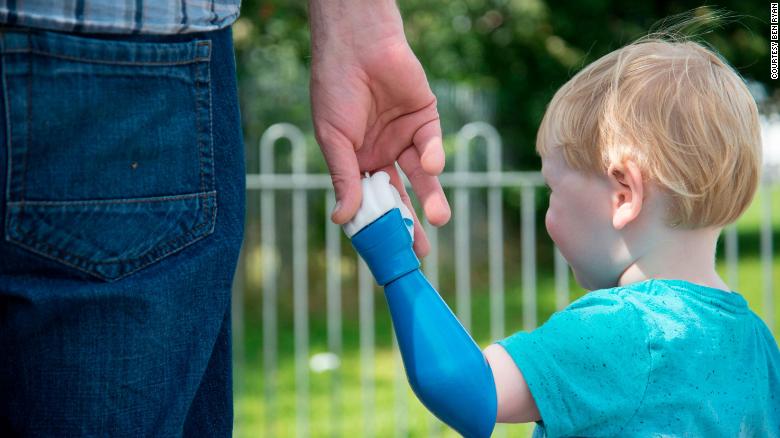After 3D printing a prosthetic arm for his son Sol, Ben Ryan decided to help others families by launching the Ambionics service.
A father has taken matters into his own hands and created a 3D printed prosthetic arm for his son Sol after he was left with an amputated arm shortly after birth.
The family from North Wales had been placed on a waiting list by the National Health Service (NHS) to receive a prosthetic arm. However, even if they made it to the top of the list, this would have likely resulted in a rigid prosthetic with no hand movement.
Given the cost of regular prosthetics and because children quickly outgrow them, the options were limited. That’s why Sol’s father, Ben Ryan, set out to come up with an alternative.
He created the design for a 3D printed prosthetic arm which would include a grip function. As part of his design, the thumb can be opened and closed via pressure when a bulb of fluid below the armpit is squeezed.
Ryan explains that for now only the thumb moves, but the important thing is that the design is robust and can withstand the weight of being crawled on.
Ever since, he has received inquiries from over one hundred families to create prosthetics for their children. This prompted him to launch an online service called Ambionics, allowing him to test the devices by working with 20 families worldwide who are sending in scans that he uses to 3D print their prosthetics.

3D Printing Reduces Costs of Prosthetics While Adding Customizability
Right now, the digital scans are taken with an Xbox scanner in order to 3D print the socket. At a low cost of $150 to $250 in materials and time, Ryan’s designs are less expensive than those of competitors. In addition, it takes him less than a week to model and print a new socket once the kid outgrows it.
More advanced prosthetics can easily cost around $7,800 from the NHS. For many parents, that’s too costly considering that they will have to regularly replace the socket as their child grows up.
However, Ryan says he won’t be getting into the business of selling these prosthetics since medical device certification would considerably increase their price. Instead, he plans to make the design free for anyone to use and help parents create the prosthetics for their kids.

It’s a similar proposition to a volunteer 3D printing network called Enabling the Future (e-NABLE) which provides prosthetic designs for anyone to 3D print and fit. Similar to Ambionics, parents can just send in photos of the arm as well as a few measurements and an e-NABLE volunteer can take it from there.
e-NABLE now represents a network of thousands of volunteers across 100 countries and has built around 3,000 devices at an average cost of $150 per hand.
Given the number of small parts in the designs, these are only suitable for kids aged four and above. However, Ryan believes that it’s vital children become accustomed to prosthetics as early as possible. That’s where Ambionics comes in to fill the gap and produce prosthetics for children as young as eight months old.

Source: CNN
License: The text of "Father 3D Prints Prosthetic Arm for Son, Launches Ambionics Service for Other Children in Need" by All3DP is licensed under a Creative Commons Attribution 4.0 International License.